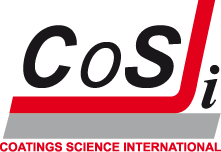Speakers COSI 2009
- Professor Xavier Allonas*, Département de Photochimie Générale, Université de Haute Alsace, Mulhouse France, Recent developments in UV curing
- Wiebke Becker*, Dupont Performance Coatings GmbH & KoKG, Germany, Rheological measurements as tool to study curing of waterborne clear coats
- Professor Gordon Bierwagen*, North Dakota State University, Department of Coatings and Polymerix Materials, Fargo, ND, USA, Detailed verification of the protection mechanisms of totally chromate free Mg-rich primer coatings for aircraft
- Dr. Antoine Carroy*, CIBA, Switzerland, Metal Catalysts and Crosslinkers
- Professor Stuart G. Croll, Department of Coatings and Polymeric Materials, North Dakota State University, Fargo ND USA, Recovery of photodegradation features at the surface of an epoxy coating
- Dr. Marjorie Dubreuil, VITO (Flemish Institute for Technological Research) – Materials Technology – Mol, Belgium, Environmental-friendly adhesion enhancement of polymeric substrates through atmospheric pressure plasma coating deposition
- Dr. Catarina Esteves, Eindhoven University of Technology, Laboratory of Materials and Interface Chemistry, Eindhoven, The NetherlandsLight emitting coatings from cross-linked PDMS/garnet composites
- Xiaohong Gu, Materials and Construction Division, Polymer Division, National Institute of Standards and Technology, Gaithersburg, USA , Studying long-term performance of a nano-ZnO filled waterborne polyurethane coating using spectroscopies and microscopies
- Dr.ir. Henk Huinink, Department of Applied Physics, Technical University Eindhoven, Eindhoven, The Netherlands, The interplay between water uptake and mechanics in multi-layered coatings – an NMR imaging study
- Dr. Christian Michael Jung, BASF SE, Ludwigshafen, Germany, Close-to-reality high-throughput screening for coatings, this lecture will be presented by Dr. Wolfgang Schrof
- Dr. Eun-Hee Kim, School of Nano & Advanced Materials Engineering, Changwon National University, Changwon, Kyungnam, Korea, Fabrication and characterization of eco-friendly functional multilayered-floor plate prepared using nonmetallic minerals
- Olaf Kohler, Chemspeed Technologies AG, Augst (BL), Switzerland, Accelerating formulation R&D by automated high output solutions
- Dr. Phil Martin, Chief Research Scientist, Stream Leader: Medical Devices, Research Manager, Bioengineering and Surface Engineering Materials Group, CSIRO Materials Science & Engineering, Lindfiels NSW, Australia, Nanostructured Thin Film Materials
- Professor Akikazu Matsumoto*, Osaka City University, Department of Applied Chemistry, Graduate School of Engineering, Osaka, Japan, Synthesis, property and applications of peroxide polymers
- Dr. Yoshiki Nakagawa*, Kaneka Corporation, Liquid Polymers Division, Hyogo, Japan, Novel UV curable telechelic polyacrylates and their coating applications
- Dr. Ulrich Nolte, Head of Synthesis Group Nano BYK-Chemie GmbH, Wesel, Germany, Highly dispersed carbon nano tubes - an innovative way to functionalise modern coatings
- Dr. Ad Overbeek, DSM NeoResins, Waalwijk, The Netherlands, Polymer Heterogeneity in Waterborne Coatings
- Dr. Claudia Philipp, Fraunhofer-Institute for Wood Research, Wilhelm-Klauditz-Institut (WKI) Braunschweig, Germany, Biobased polyurethane dispersions (PUD) for furniture coatings
- James Regan, Q-Lab Weathering Research Service, Homestead, FL 33034-1725 U.S.A, Outdoor weathering must verify accelerated testing
- Dr. Bart Reuvers*, DSM NeoResins, The Netherlands, From rheology to performance of high solid trim paints
- Erik Risberg*, R&D Marine and Protective Coatings, Jotun A/S, Norway, Current trends in marine antifouling coatings for marine applications
- Patrice Roose*, Research Scientist, Physical Characterisation Department, CYTEC, Drogenbos, Belgium, Aqueous dispersions of acrylated urethane oligomers: colloidal, rheological and particle aggregation characteristics
- Jurgen Scheerder, DSM NeoResins, Waalwijk, The Netherlands, The development of a novel polymer composition for use in waterborne primers with excellent anti-knot bleeding properties
- Dr. D.N.N. Singh, Deputy Director, Corrosion & Protection, National Metallurgical Laboratory, Jameshedpur, India, Performance and mechanism of action of self priming organic coating on oxide covered steel surface
- Per Aggerholm Sørenson, Department of Chemical and Biochemical Engineering, Technical University of Denmark, Lyngby, Denmark , Cathodic delamination of anticorrosive coatings: quantification of ionic transport rates along coating-steel interfaces using novel experimental approach
- Dr. Bérangère Toury, Laboratoire des Multimatériaux et Interfaces, UMR 5615 CNRS, Université Lyon 1, Villeurbanne Cedex, FRANCE, Preparation of boron nitride & aluminium nitride coatings by the polymer derived ceramics (PDCs) route
- Dr. Martin Vollmer, Bayer MaterialScience AG, BU Coatings, Adhesives, Specialties & Business Development Dispersions, Leverkusen,Germany, "2K Waterborne Polyurethane Coatings on the rise – from property to function"
- Dr. Mariëlle Wouters, TNO Science and Industry, Eindhoven, The Netherlands, Surface structuring and coating performance
- Chen-Wu Wu, Institute of Mechanics, Chinese Academy of Sciences, Beijing, PR China, On a novel method of impact with front-end-coated bullet to evaluate the interface adhesion of the film and substrate
- Dr. Alex Yahkind*, AkzoNobel Coatings Inc. USA, Polyols based on isocyanates and melamines and their applications in 1K and 2K coatings
- * At the COSI conference are two kinds of speakers: invited speakers and regular speakers. Invited speakers have been put forward by one or more of the committee members and are exempted from the paper selection procedure. Invited speakers are still obliged like the committee members to pay the full fee. Regular speakers have submitted a paper to be considered for presentation by the committee members. Regular speakers will be informed of their selection in January 2009. They also are obliged to pay the full fee. COSI only supports reduced fees for students if they either present a poster or give a lecture. Note: There is only a total of 32 lecture spaces of wich ~10 are reseverd for invited speakers.
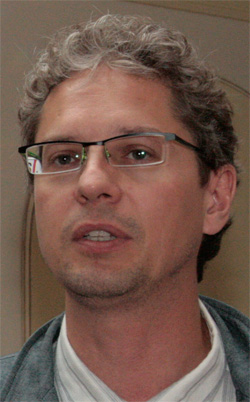
Prof.dr. Xavier Allonas
Département de Photochimie Générale, Université de Haute Alsace,Mulhouse France
Title lecture
Recent developments in UV curing
Authors
X. Allonas, C. Croutxé-Barghorn, J. Lalevée, J.P. Fouassier
Abstract
UV Curing is a recognized technology that affords ecological, economical and smart materials. Despite the fact that this technology has been applied for more than forty years in different industrial fields, some drawbacks appears today that limit the extension of this technology to new domains. In this paper, recent development concerned with UV Curing are reviewed and discussed. Particular attention is paid to light sources, oxygen inhibition of free radical polymerization, sensitization of cationic polymerization, new monomer chemistries, organic/inorganic coatings.
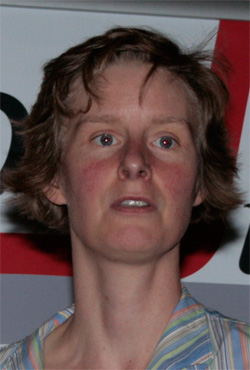
Wiebke Becker
Dupont Performance Coatings GmbH & KoKG, Germany
Title lecture
Rheological measurements as tool to study curing of waterborne clear coats
Authors
Wiebke Becker, Marcus Nagel
Abstract
Rheology measurements were used to study the flash off and curing of 2 pack waterborne clear coats. By analysing the viscoelastic properties of the waterborne clear coats and by correlating the results to model formulations curing can be examined in detail. The comparison with a corresponding solventborne formulation leads to conclusions about the influence of water on the viscoelastic properties and the impact of water on the curing reaction
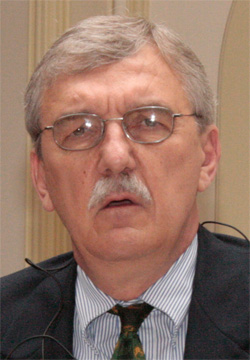
Prof.dr. Gordon Bierwagen
North Dakota State University, Department of Coatings and Polymerix Materials, Fargo, ND, USA
Title lecture
A Totally Chromate-Free Corrosion Protective Coating System for Aircraft Requiring No Chromate Pretreatment
Authors
Gordon Bierwagen, Roger Brown, Dante Battocchi and Scott Hayes
Abstract
There has been much R&D effort expended to develop pretreatments and coatings that allow the replacement of toxic, carcinogenic, mutagenic, environmentally hazardous chromates used as pretreatments and pigments in aircraft coating systems. There have been many claims for chromate replacement in primer and pretreatment systems for aircraft, but no systems presently are in use that can function and meet specifications without some form of chromate used in the pretreatment and/or primer. The Mg-rich primer technology developed at North Dakota State University and now in final commercial development at AKZO Nobel Aerospace Coatings shows that finally aerospace Al alloys can be protected against corrosion. With simple cleaning only or a non-chromate pretreatment, the Mg-rich primer + aerospace topcoat provides an aircraft protection system that give corrosion protection that equals or exceeds any system using chromate in any form. About 18 peer reviewed papers have been published and at least twice that many presentations at technical meetings describing this new aircraft primer technology. There are an extensive number of samples in outdoor exposure, and in exposure on small parts of aircraft like port-hole covers and doors, and the coating system has been in accelerated exposure cabinets of all sorts. Early blistering on immersion or B117 continuous salt spray seems to sometimes occur when a topcoat that is not very water resistant is used. Very early blistering near to scribed areas of an immersed or exposed coating is also sometimes observed. These blisters apparently are due to hydrogen generation from water contact with a particle near the scribe. This has not been a early predictor of any later corrosion failure. Open Circuit Potential measurements indicate an extended period of cathodic protection of the Al aircraft alloys such as AA 2024 T-3 and AA 7075 T-6. After this stage of protection, a combination of Mg oxide, hydroxide and carbonate compounds seem to give protection to the system, as we have seen corrosion protection given to samples for greater than 10,000 hours of cyclic exposure for Mg-rich primers with good aerospace topcoats. Further, the possibility of Mg pigments acting as active oxygen traps drastically reducing oxygen transport to the surface underneath an undamaged topcoat may also be occurring, and this is currently under investigation. All data indicates that the Mg-rich primer + aircraft topcoat system gives excellent corrosion protection by mechanisms entirely different from the modes of protection for aircraft alloys given by the toxic, carcinogenic chromate compounds now in used in all corrosion protection systems for aircraft. In most cases thus far examined, the protection, especially in cyclic exposure, exceeds the present chromate-based systems..
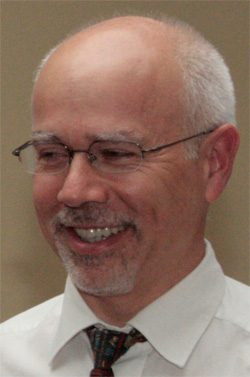
Dr. Antoine Carroy
CIBA, Switzerland
Title lecture
Novel Latent Metal Catalysts for 2K Systems
Authors
A. Carroy, T. Hintermann, G. Baudin, D. Bauer, P. Contich, K. Dietliker, M. Faller, R. Kohli-Steck, C. Lordelot, K. Misteli
Abstract
Polyurethane chemistry is established throughout the world in many coating, adhesive, sealant, foam and elastomer applications. This results essentially from the impressive variability of properties that can be achieved through the vast diversity and possible combinations of polyurethane raw materials. Although dibutyltindilaurate (DBTL) is the most versatile metal catalyst in polyurethane reaction catalysis, its bad toxicological profile and the changes in its classification and labeling are forcing the formulators to look for alternative catalysts. On the other hand, the constant need of increased productivity, i.e. faster curing systems, can only be achieved at the expense of a very short pot-life when using standard catalysts, e.g. DBTL. In the present paper, we show that we have successfully developed a smart way of meeting the two opposite requirements through the development of photo-latent metal catalysts. Since the latter will release the active catalyst only upon exposure to UV-light, the formulation will remain stable for a long time as long as it remains in the dark. Data showing the influence of UV-light exposure on the performance of these novel latent metal catalysts in a model two-component polyurethane coating are presented in comparison to the non-latent reference catalyst.
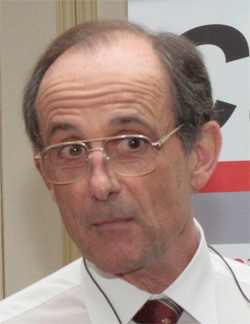
Prof.dr. Stuart G. Croll
Department of Coatings and Polymeric Materials, North Dakota State University, Fargo ND, USA
Title lecture
Recovery of Nanoindentation and Photodegradation Features at the Surface of Epoxy Coatings
Authors
Xiaodong Shi, Stuart G. Croll
Abstract
Surface roughness, arising from photodegradation, increases during exposure but may relax during periods when exposure is limited, for example, at night or during dark cycles in accelerated testing. Different ambient temperatures will change the balance between photodegradation defect size and recovery. The accumulation of the results of this balance will have a significant effect on the exposure period before which the polymer coating will fail. An epoxy coating was exposed to various periods of ultraviolet irradiation, after which the recovery of the surface roughness was monitored at several temperatures, above and below the glass transition temperature. For comparison and to aid understanding, recovery of mechanical defects made by nano-indentation was followed under the same temperature regimes. The recovery of both these types of defects showed evidence of a glass transition temperature that was lower at the surface of the epoxy coatings, than was measured of the bulk material. Spectroscopic and nano-mechanical techniques were used to characterise this surface region in the films and determine whether its origin was physical or chemical, and to determine its extent. Atomic Force Microscopy showed that photodegradation increased the size of phase separated domains at the surface, as well as roughness.
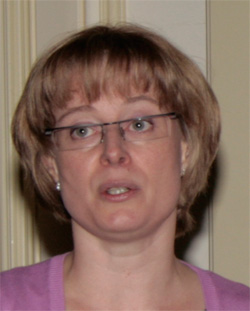
Dr. Marjorie Dubreuil
VITO (Flemish Institute for Technology Research) - Materials Technology - Mol, Belgium
Title lecture
Environmental-friendly adhesion enhancement of polymeric substrates through atmospheric pressure plasma coating deposition
Authors
M.F. Dubreuil, D. Vangeneugden, E. Bongers, E. van Hoof
Abstract
From an industrial point of view, there is an increasing interest to control the surface functionality and the surface properties of all kinds of materials. In particular, an increasing demand is registered to control adhesion properties of different substrates, more specifically of polymer substrates (primer replacement, improved printability). Recent developments in the field of atmospheric plasma technology are creating new perspectives beyond the current state-of-the art in corona pretreatment of materials. By controlling the gas atmosphere and electrical conditions, one can increase the efficiency of the plasma surface treatment significantly. Furthermore, by adding reactive chemical precursors to the plasma discharge, the surface chemistry can be controlled and thin functional coatings can be deposited. Additionally, atmospheric pressure plasma technology is cost effective, and is significantly more environmental friendly than many current alternative processes.
This paper reports on the development of nano-sized adhesive coatings by dielectric barrier discharge (DBD) plasma at atmospheric pressure. Polyolefins, poly(ethylene terephtalate), polyamide,...substrates have been investigated. The plasma discharges are generated in a nitrogen atmosphere at low RF frequencies (1-50kHz) and dissipated powers comprised between 0.2 and 0.8W/cm2. According to the chemistry introduced in the plasma (such as acrylic acid, allylamine, ethyl acetate, hydroxyethyl acrylate,...) different functionalities are introduced, enabling the tuning of the final surface properties. The surface properties have been characterized by contact angle measurements, infra-red spectroscopy, derivatization followed by X-ray photoelectron spectroscopy, and interferometry. A drastic decrease of the contact angle with water has been obtained with all precursors. For instance the introduction of amide functionalities on a polypropylene surface (initial CAH2O: 98°) leads to a significant decrease of the contact angle with water down to 10°. Permanent enhancements of the surface tension up to 70dynces/cm have been obtained.
A case study for industrial implementation will be discussed where the adhesion improvement between an acrylate polymer and acetate-based glue will be emphasized. An enhancement of the adhesion factor comprised between 20 and 80% is obtained in comparison with other commercial available solutions by introduction of polar groups on the acrylate substrate.
Biography Dr. Marjorie Dubreuil
- 36 years
- PhD in Polymer Chemistry
- Married
- 2 children
After starting my university studies at the University of Rouen (France), I joined the research group of Prof. Eric Goethals at the University Ghent (Belgium) to perform my PhD in the field of polymer chemistry. More specifically, I studied the synthesis and activity of functionalized initiators for the living cationic ring-opening polymerization of cyclic monomers. In 2000, I joined Solvay, an international pharmaceutical and chemical company. At their corporate R&D center I was involved in Solvay"s specialty polymers development program. In 2005, I join the Flemish Institute for Technological Research (VITO), as senior scientist to develop the (reactive) atmospheric pressure plasma technology for surface modification.
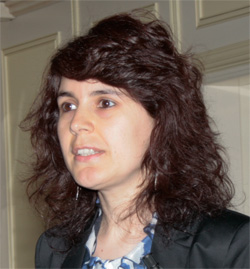
Dr. Catarina Esteves
Eindhoven University of Technology, Laboratory of Materials and Interface Chemistry, The Netherlands
Title lecture
Light emitting coatings from cross-linked PDMS/garnet composites
Authors
A.C.C. Esteves, J. Brokken-Zijp, J. Laven, G. de With
Abstract
High efficiency white light-emitting diodes (LEDs) are the latest and most advanced technology on light sources for lighting applications. One of the methods currently used to create white light LEDs is based on inorganic phosphor converters which convert blue light into white light. To expand this technology to general lighting, new approaches are needed to produce solid state materials, stable under high temperatures at atmospheric conditions, which can be easily processed and shaped with low production costs and energy consumption.
In this work a polymer-composite approach was developed based on Poly(dimethylsiloxane) (PDMS) cross-linked coatings containing micrometer-size YAG:Ce garnet particles, which are typical white light phosphor converters. The coatings were cross-linked via hydrosilylation reactions between di-vinyl terminated PDMS polymers and a multifunctional cross-linker, in the presence of the particles. The garnet particles were homogeneously and individually dispersed through the bulk of the coating for concentrations up to 20 % in volume. The cross-linked composite coatings emit white light upon irradiation with a blue light source. The degradation of coatings was investigated by exposing these to high temperature and high power visible light irradiation, for long a period of time, under atmospheric conditions. The composite coatings have shown no signs of degradation after being submitted to the degradation tests. Microscope-Transmittance IR Spectroscopy confirmed the stability of the composite coatings and only small structural changes were registered on the cross-linked PDMS matrix. The current results show the viability of the use of cross-linked PDMS based coatings containing luminescent garnet particles for general lighting applications.
Interview
During COSI 2009 Dr. Esteves was interviewed by Kristen Wrede (European Coatings).
Watch the video of the interview with Dr Catarina Esteves here.
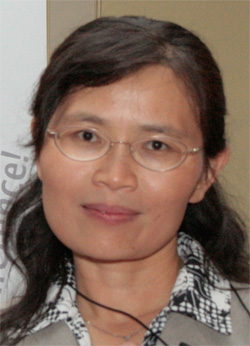
Dr. Xiaohong Gu
Materials and Construction Division, National Institute of Standards and Technology, Gaithersburg, USA
Title lecture
Studying long-term performance of nano-ZnD filled waterborne polyurtehane coating using spectroscopies and microscopies
Authors
Xiaohong Gu, Dongmei Zhe, Minhua Zhao, Guodong Chen, Jin Zhou, I-Hsiang Tseng, Stephanie S. Watson, Debbie Stanley, Paul E. Stutzman, Li-Piin Sung, Tinh Nguyen, Joannie W. Chin and Jonathan W. Martin
Abstract
Recent development in the nano-particle technology prompts the use of inorganic UV absorbents such as zinc oxide (ZnO) and cerium oxide (CeO2) for UV protection. Although the inorganic UV absorbents exhibit advantages of being non-migratory, transparent, as well as versatile properties in electrical, optical, mechanical and antibacterial aspects, the mechanisms of how these nanoparticles affect the long-term performance of polymeric coatings are still not clear. Researchers have different views on this issue. Previous studies indicate that these nanoparticles can be a UV-protector or a light catalyzer, depending on the polymer matrix or the exposure environments. In this study, the effect of ZnO nanoparticles on the performance of a waterborne polyurethane coating exposed to UV was assessed and the photodegradation mechanism involved with ZnO nanoparticles was investigated. The specimens of nano-filled polyurethane thin films were prepared by spin casting a mixture of one component waterborne polyurethane and different loadings of waterborne ZnO dispersion onto calcium fluoride substrates. Exposure was carried out in NIST SPHERE (Simulated Photodegradation via High Energy Radiant Exposure) at both dry (0% RH) and humid conditions (75% RH) at 45 °C. To study the photolytic effect of nanoparticles, the degradation of specimens exposed to the same conditions in the dark was investigated. The chemical degradation was examined by FTIR spectroscopy and UV-vis spectroscopy. Changes in surface morphology and microstructure were characterized by confocal microscopy and atomic force microscopy (AFM). The identification of nanoparticles and measurement of their distributions were measured by energy dispersive X-ray spectroscopy analysis conducted by means of scanning electron microscope (SEM/EDX). The surface thermal property of the degraded specimens was examined by AFM-based nanoscale thermal analysis (Nano-TA) and was compared with surface chemistry and surface mechanical properties. The results clearly showed that the photo-catalytic effect of ZnO nanoparticles was dominant in the photodegradation of this nano-filled polyurethane system, and this effect was greatly influenced by the relative humidity and the temperature during the exposure. The influence of nanoparticle loading on the degradation modes of this coating system was also observed, and postulated models of nanoparticle release from the nano-filled polymeric coatings during photodegradation will be presented. In addition, electron paramagnetic resonance (EPR) spectroscopy has been used to examine the surface of ZnO nanoparticles under UV irradiation for a better understanding of the photodegradation mechanism of nano-filled polymeric coatings.
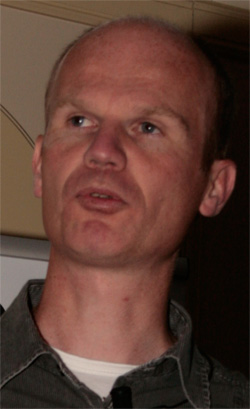
Dr.ir. Henk Huinink
Department of Applied Physics, Technical University Eindhoven, The Netherlands
Title lecture
The interplay between water uptake and mechanics in multi-layered coatings - an NMR imaging study
Authors
H.P. Huinink, V. Baukh, S.J.F. Erich, O.C.G. Adan, L.G.J. van der Ven
Abstract
In many applications coatings are applied in multiple layers. The different layers add different functionalities to the coating: e.g. primer layers improve the adhesion, top coats give protection against chemicals and water ingress, etc. Due to the different chemical composition and way of application some layers are more sensitive to water then others. Classical methods for measuring water uptake, like gravimetry and EIS [1], do not have spatial resolution, which makes the interpretation in this type of systems rather complex. In this study two layer systems have been studied, which consists of a waterborne basecoat layer and a protective top coat. The base layer was applied on a glass substrate via physical drying of an acrylate dispersion. The top coat was applied on top of this base layer and chemically cross-linked. Water uptake and drying experiments have been performed on this system. Depth profiles of the water distribution have been obtained with NMR imaging by using the so-called GARField approach [2]. Both uptake and swelling of the base coat layer was monitored in time. Remarkably, the water uptake typically took several days, whereas drying was much faster and occurred on a timescale of hours. A D2O/H2O exchange study was performed to exclude the role of mechanical deformation. From this study it was concluded that the elastic deformation of the top coat, needed for swelling, slows down the absorption process significantly. These experiments nicely show the added value of NMR imaging for water uptake studies in more complex coating systems.
[1] K.N. Allahar, B.R. Hinderliter, G.P. Bierwagen, D.E. Tallman, S.G. Croll, Prog. Org. Coat., 62, 87 (2008).
[2] P.M. Glover, P.S. Aptaker, J.R. Bowler, E. Ciampi, and P.J. McDonald, J. Mag. Res., 139, 90 (1999).
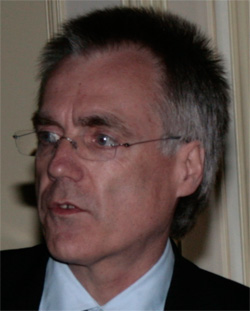
Dr. Christian Michael Jung
Represented by Dr. Wolfgang Scrof
BASF SE, Ludwigshafen, Germany
Title lecture
Close-to-reality high-throughput screening for coatings
Authors
C. Jung, N. Gruber, T. Meier, W. Schrof
Abstract
Variations in chemical composition and in processing and curing conditions will greatly influence the application properties of coatings. For a coatings developer the freedom to use multiple ingredients and processes becomes a challenge because of the multi-dimensional parameter space.
In this respect, high-throughput methods offer a tool to improve coatings development due to increased throughput and a better comparability of data sets. In a joint effort BASF and BOSCH labs systems have developed a ”close-to-reality” robot for coatings formulation, application, curing and testing to meet real customer requirements. What makes this approach extensive is the need to dose, mix, and disperse lots of high-viscous or solid ingredients, adjust for pH or viscosity, apply by spraying or doctor blading, cure by baking or UV, finally test the samples for gloss, color, thickness, scratch or chemical resistance. The presentation will give a first insight into this new promising ”close-to-reality” approach for coatings development.
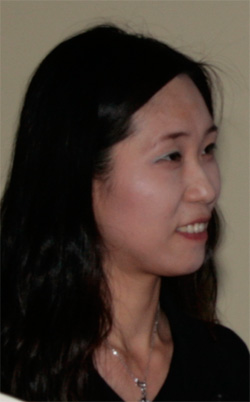
Dr. Eun-Hee Kim
School of Nano & Advanced Materials Engineering, Changwon National University, Changwon, Korea
Title lecture
Fabrication and characterization of eco-friendly functional multilayered-floor plate prepared using nonmetallic minerals
Authors
Sang-Won Myoung, Eun-Hee Kim, Woo-Ram Lee, Yeon-Gil Jung, Yoon-Suk Nam, Woon-Sub Kyoung
Abstract
New material design has been proposed for preparing eco-friendly floor plate, using nonmetallic minerals and polyurethane acrylate (PUA). The floor plate consisting of yellow soil, illite, wooden dust, and yarn fabric was fabricated by pressing, and then PUA coatings were conducted on the surface of floor plate with different compositions of 60:40 and 80:20 vol.% in PUA and nonmetallic minerals, respectively, and bare PUA. The microstructure of floor plate and the dispersion of nonmetallic minerals were observed using a scanning electron microscopy (SEM) and an energy dispersive X-ray spectrometer (EDX). Fracture strength and tensile strength of the floor plate prepared were investigated using a universal testing machine (UTM). The surface properties after coating and the interfacial stability between the coating and the floor plate were examined, including eco-friendly functions. The floor plate having five layers has been successfully prepared without any delamination. The nonmetallic minerals are homogenously dispersed, which can be confirmed by microstructure and EDS mapping. The nonmetallic minerals provide the floor plate with eco-friendly functions such as unit-infrared emission and antifungal ability, improve the deodorization ratio, and decrease the emission ration of TVOC and HCHO, compared with conventional wooden plate. Also the water resistance of the floor plate prepared was improved by PUA coating.

Olaf Kohler
Chemspeed Technologies AG, Augst(BL) Switzerland
Title lecture
Accelerating Formulation R&D by automated high output solutions
Authors
Amiro Abou-Hamdan PhD
Abstract
The use of automated High Output Experimentation has expanded from its origins in Biotech and CombiChem into laboratories of many other areas in the chemical industry. New fields like Polymer and Material Sciences, which strongly affect the Cosmetic Industry, have successfully implemented High Output Experimentation to significantly increase their productivity.
For this reason flexible, modular, and scalable automated solutions become more commonly used in Polymer and Material Sciences Laboratories where synthesis and formulation, involving multiple dispensing and mixing of (viscous) liquids, pastes, solids and gases under controlled conditions, represent core requirements.
Additional requirements to these automated solutions strongly depend on the particular workflow and are governed by the characteristics of the individual application. Those needs might cover a very broad and complex range of unit operations.
Using selected examples, from the Pigment, Polymer and Coating Industry, this presentation will show how various challenging parallel workflows have been successfully automated.
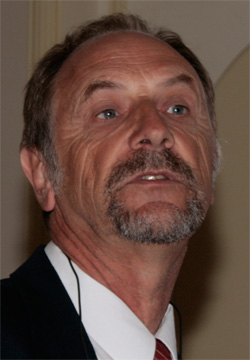
Dr. Phil Martin
Chief Research Scientist, Stream Leader: Medical Devices, Research Manager, Bioengineering and Surface Engineering Materials Group, CSIRO Materials Science & Engineering, Lindfiels NSW, Australia
Title lecture
Nanostructured Thin Film Materials
Authors
P.J.Martin, A.Bendavid, D. Wang, T. Saito
Abstract
Nanostructured thin film materials have been synthesized using a filtered cathodic vacuum arc deposition (FCVAD) method. Two types of nanostructured materials are described based on TiSiNx superhard nanocomposites and Al-Si mesoporous structured materials. TiSiNx films are deposited using a hybrid arc-TMS and arc-magnetron technique. Superhard coatings are produced in both cases with hardness in excess of 40 GPa. Phase separated AlSi films composed of Al cylinders embedded in an amorphous Si matrix were also prepared on conducting Si substrates by FCVAD. The porous structure was obtained from the phase separated AlSi film after removal of Al cylinders by wet etching in an ammonia solution The compositional dependence of AlSi films on a negative substrate bias showed a different trend depending on the cathode composition because of the self-sputtering process during the deposition. Scanning electron microscope images of the etched AlSi films showed that the average diameter of pores was increased from 3 nm to 7 nm by applying a negative substrate bias voltage during the deposition. The honeycomb ordered arrangement of pores was observed at 0 V and –25 V substrate bias. The substrate temperature during the depositions had almost the same effect on the film morphologies as the negative substrate bias.
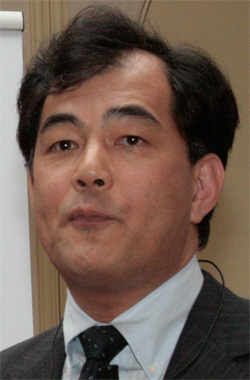
Prof.dr. Akikazu Matsumoto
Osaka City University, Department of Applied Chemistry, Graduate School of Engineering, Osaka, Japan
Title lecture
Synthesis, Property and Applications of Peroxide Polymers
Author
Akikazu Matsumoto
Abstract
We synthesized new kinds of degradable polymers by radical alternating copolymerization of 1,3-diene monomers with molecular oxygen as starting materials. The polymers with peroxy repeating groups in the main chain readily degrade with a trigger such as heating and photoirradiation, leading to the formation of well-defined low-molecular-weight products. The readily-degradable branched and cross-linked polymers with the peroxy units as the branching and cross-linking points were also synthesized. We report a facile method for the synthesis of degradable gels, which were prepared by the introduction of a dienyl group into the side chains or the chain ends of conventional polymers and the subsequent radical copolymerization with oxygen. We further found a drastic morphology change in the phase-separated structure of graft copolymers containing a peroxide linkage at the branching point upon heating. The peroxide polymers include a significant potential for a wide range of uses in various fields of polymer chemistry and material science including adhesion and coating.
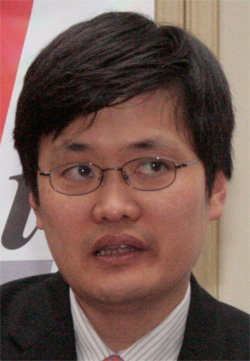
Dr. Yoshiki Nakagawa
Kaneka Corporation, Liquid Polymers Division, Hyogo, Japan
Title lecture
Novel UV curable telechelic polyacrylates and their coating applications
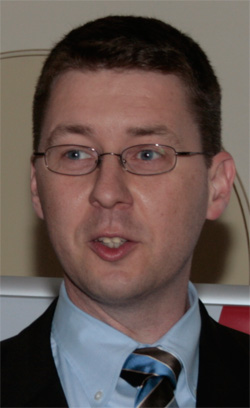
Dr. Ulrich Nolte
Head of Synthesis Group Nano, BYK-Chemie GmbH, Wesel, Germany
Title lecture
Highly dispersed carbon nano tubes - an innovative way to functionalise modern coatings
Authors
Dr. Ulrich Nolte, Dr. Wolfgang Pritschins
Abstract
The discovery of Carbon Nano Tubes (CNT) by Sumio Iijima in the early 1990s has opened a new world in materials science. This material exhibits extraordinary mechanical properties and unique electrical properties. Not at least CNT are efficient conductors of heat. The high length-to-diameter ratio of this material seems to be ideal for coatings to achieve antistatic properties or even electrical conductivity at low loading levels. Another potential application of CNT is the mechanical reinforcement of coatings. To max out the potential of CNT it is of great importance that the distribution of CNT in the matrix is well balanced. This objective can be reached by using special CNT dispersions made with the right dispersion technology in combination with a suitable wetting and dispersing additive.
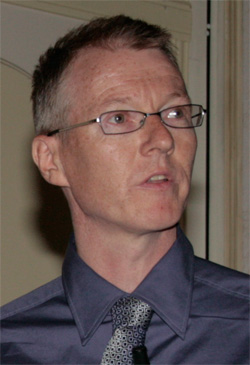
Jurgen Scheerder
DSM NeoResins, Waalwijk, The Netherlands
Title lecture
The development of a novel polymer composition for use in waterborne primers with excellent anti-knot bleeding properties
Authors
Jurgen Scheerder Hinke Malda, Derrick Twene and Ad Overbeek
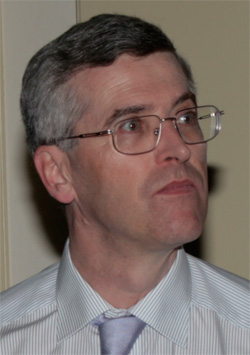
Dr. Ad Overbeek
DSM NeoResins, Waalwijk, The Netherlands
Title lecture
Polymer Heterogeneity in Waterborne Coatings
Authors
A. Overbeek
Abstract
An overview will be presented of the progress in understanding of polymer heterogeneity over the last 20 years and how this has contributed to the improvement of coatings. Solvent based polymers are homogeneous in nature, since all polymeric material tends to be dissolved homogeneously in the same solvent mixture. This is different for most waterborne polymers, which tend to be present in a compartmentalized way. Most polymeric material is present in particles, which are separated by the continuous aqueous phase. This gives excellent opportunities to create particle morphologies that form the basis for the film morphology after drying of the coating. This paper will show how heterogeneity in the polymer can contribute to solution of several persistent problems of the coating industry, including high gloss, open time for brushable paints and adhesion to untreated polypropylene.
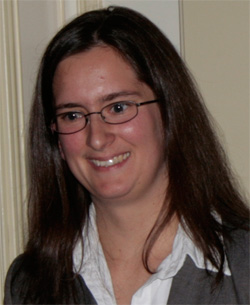
Dr. Claudia Philipp
Fraunhofer-Institute for Wood Research, Wilhelm-Klauditz-Institute (WKI), Braunschweig, Germany
Title lecture
Biobased polyurethane dispersion (PUD) for furniture coatings
Authors
C. Philipp, S. Friebel, K. Wittenberg
Abstract
Increased environmental awareness and government restrictions lead to the substitution of solvent-borne coatings by waterborne products and usage of renewable raw materials. Vegetable oils offer a great potential by using the oil itself, fatty acids, glycerol, or chemical modifications thereof. Additionally polymer building blocks have been biotechnologically converted from renewable resources, e.g. glycerol to 1,3-propanediol. In this study utilization of 1,3-propanediol and modified fatty acids for polyester polyol synthesis has been investigated. These polyols have been converted to polyurethane dispersions with excellent properties regarding chemical, scratch and abrasion resistance. It has been found that petrochemical based 1,6-hexanediol may be substituted by 1,3-propanediol without loosing as much elongation properties and hydrolysis resistance as expected from the chemical structure. Basic formulations of these generated NMP-free polyurethane dispersions (PUD) have been investigated and tested according to the German furniture standard DIN 68861.
Biography Dr Philipp
Claudia Philipp is a research scientist and member of the Department for Surface Technology at the Fraunhofer Institute for Applied Sciences (FhG), Wilhelm-Klauditz-Institute (WKI) in Braunschweig, Germany. After her study in food chemistry at Technical University in Braunschweig, she joints the Fraunhofer WKI and finished her phd thesis in the field of coating additives in 2008. Actually she works on the development of polyesters and polyurethanes for waterborne resins for wood coatings with focus on biobased resources.
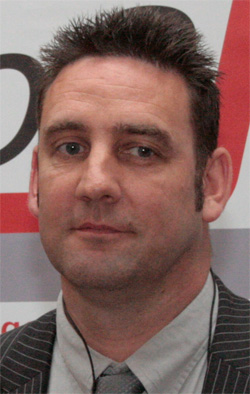
James Regan
Q-Lab Weathering Research Service, Homestead, USA
Title lecture
Outdoor weathering must verify accelerated testing
Authors
Michael Crewdson
Abstract
Outdoor exposure racks and accelerated chambers are the two main methods for testing materials for weathering durability. In the fast paced current world, time constraints have determined that outdoor weathering exposures take too long to provide the necessary results. The emphasis has therefore been placed on accelerated laboratory testing to provide data on the long term outdoor durability of many products. In many cases now, outdoor exposure is not even performed or required.
Not all of the factors of weathering can be recreated in an accelerated chamber however, and there are a number of other variables that may cause an incorrect result and therefore the wrong conclusion. Cycle times and the effect on the exposed specimens are different between the outdoors and the chamber. Over-exaggerated test conditions may also cause the wrong failure type. Too much reliance only on accelerated testing can be potentially misleading.
In this paper we will discuss the inherent problems that accelerated testing can have, and show techniques that can be used to ensure that the results from the accelerated testing are correct. Outdoor weathering must be used to verify the accelerated testing, and it is possible with the correct testing procedure to get meaningful data from an outdoor test in a short time frame. Those techniques include correct experimental design, proper evaluations, control materials, and the use of reliable statistical analysis. These processes will allow the user to determine acceleration and correlation factors and will ensure that the accelerated testing is giving the right results.
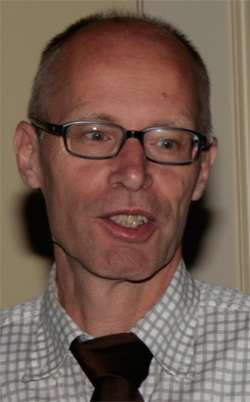
Dr. Bart Reuvers
DSM NeoResins, The Netherlands
Title lecture
From rheology to performance of high solid trim paints
Authors
Bart Reuvers
Abstract
A trim paint should fulfill various rheological requirements during the successive processes of storage, application and drying. While being stored viscosity of the paint should be high enough to prevent settling of pigment and filler particles. During transfer of the paint from the can to the substrate viscosity should remain high in order to prevent dripping from the brush. After the transfer process however, viscosity should rapidly drop to ensure ease of spreading of the paint with the brush. Finally, during drying of the paint, the viscosity increase in time should ensure sufficient resistance against sagging of the paint from a vertical substrate. In order to fulfill these conflicting rheological demands the paint should display "shear-thinning" rheology. At low levels of shear stress viscosity should be high to ensure storage stability and resistance against dripping. At a high shear stress level viscosity should be low in order to ensure ease of spreading. Here we compare different manners to introduce shear-thinning rheology in high solid alkyd resins obeying the VOC legislation from 2010 onwards. We introduced shear-thinning either by modifying the architecture of the resin molecules, or by adding a urethane-urea based rheology modifier or by transamidation of the high solid alkyd resin. The three ways to accomplish shear-thinning behavior yield significant differences in paint consistency achieved after one day at rest, as quantified by the gel strength of the paints. However, this gel strength did not show any relation with the resistance against sagging after spreading of the paint by brush. In case of transamidation high gel strength is achieved, while only low resistance against sagging is accomplished. Addition of the urethane-urea based modifier, on the other hand, results into high resistance against sagging while hardly any gel strength develops during prolonged storage. Upon modification of the molecular architecture of the high solid resin the gel strength remains zero. However, resistance against sagging and dripping significantly increases. An explanation for these sometimes counter intuitive results will be given with the help of a rheological study.
Biography Dr Reuvers
1982: Graduated as physicist in the field of rheology at the Twente University.
1986: PhD in the field of membrane technology also at the Twente University.
1986 – 2005: Industrial researcher at Akzo Nobel on subjects related to paint application.
2005 -2008 : Industrial researcher at DSM NeoResins+ working on the development and testing of resins for paints.

Dr. Erik Risberg
R&D Marine and Protective Coatings, Jotun A/S, Norway
Title lecture
Current trends and challenges in the field of antifouling coatings for naval applications
Author
Erik Risberg
Abstract
The importance of efficient fouling protection has been known for centuries and, in a world of economical turbulence, ship owners and management companies do their best to cut costs in an increasingly competitive market. It was estimated that the world fleet in 2007 represented 1100 million dead weight tonnage (dwt) and consumed approx. 390 million tons of marine bunker fuel a year. Extensive fouling may increase the fuel consumption of a vessel with as much as 40% and a good antifouling paint means a lot for the fuel economy. Ensuring efficient fouling protection is therefore not only important in economical terms, but also to reduce environmental impact.
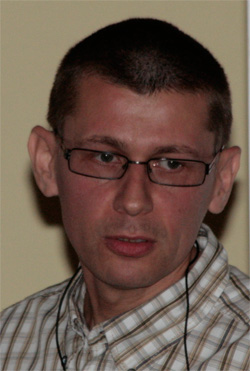
Dr. Patrice Roose
Research Scientist, Physical Characterisation Department, CYTEC, Drogenbos, Belgium
Title lecture
Aqueous dispersions of acrylated urethane oligomers: colloidal, rheological and particle aggregation characteristics
Authors
P. Roose1, M. Tielemans1, L. Deriemaeker2, R. Finsy2
1 Research & Development, Cytec Surface Specialties S.A., Anderlechtstraat 33, B-1620 Drogenbos, Belgium
2 FCOL, Vrije Universiteit Brussel, Pleinlaan 2, B-1050 Brussels, Belgium
Abstract
Aqueous colloidal dispersions of acrylated polyurethane oligomers (referred to as radiation-curable polyurethane dispersions or UV-PUD"s) know a growing interest as coating systems for wood and vinyl flooring. Since film-formation (drying) and hardening (photo-curing) take place in distinct steps, the need for volatile filming aids in the preparation of hard coatings is bypassed which is recognized as an environmental benefit. The colloidal and rheological properties play a central role during manufacturing, storage, transport, formulation and coating of the dispersion. In contrast to other polymer dispersions, however, systematic and detailed studies have scarcely been reported in the literature for aqueous PU dispersions. The aim of this paper is to shed light on the effect of composition on the colloidal characteristics (average particle size, size distribution, ζ-potential), the steady-state flow and the particle aggregation kinetics of typical UV-PUD"s. The dispersions were prepared from urethane oligomers with different amounts of carboxylic functions and a bulky polyacrylate end group. The properties are compared to a model telechelic UV-PUD with a lower acrylate-to-polyurethane ratio similarly prepared using a monoacrylate alcohol (hydroxyethylacrylate) as chain termination. Based on the Derjaguin-Landau-Verwey-Overbeek theory, a consistent treatment of the data is provided which suggests that the predominant repulsive particle-particle interaction is electrostatic. Following this approach, the surface charge density, Hamaker´s constant and the loci of counterions are estimated.
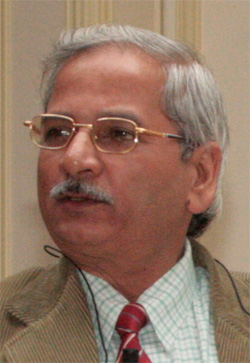
Dr. D.N.N. Singh
Deputy Director, Corrosion & Protection, National Metallurgical Laboratory, Jameshedpur, India
Title lecture
Performance and mechaniscm of action of self priming organic coating on oxide covered steel surface
Authors
D.N.N. Singh
Abstract
The history for development of self priming coatings goes back to 1931 when H.O.Albrecht filed a patent on single step formulation to control rust [1]. Thereafter, little efforts were put forward to improve such coatings. The first systematic step in this direction was reported by C.H.Hare in 1978 where a two pack system was suggested for coating of metals’ substrates [2]. In this method, the wash primer having phosphoric acid as one of the components was slowly mixed with main component of coating having resins, pigments, solvents etc. The problem associated with this approach was that the components of the coatings became unusable within a few hours of mixing of wash primer. Spadafora et.al. reported application of primer less coating on aluminium substrate [3]. C.T. Lin et.al in 1992 [4] and Meldrum et.al in 1993 [5] published their results incorporating formulations and performance of a single step phosphate / paint system. In 1993, Lin et.al reported the interfacial chemistry of a single – step phosphate/paint system and claimed that the enhanced coating adhesion was caused due to the formation of phosphorus –oxygen-carbon linkage bond [6]. It was suggested by Yu et.al. that organic phosphatizing reagents were more dispersible in in-situ phosphatizing coatings and phosphate bonding was via acid (PO4--)–base (Fe) type interaction rather than an induced dipole interaction between P=O and Fe complex type [7]. A series of papers had been published by these authors incorporating results in this area [8-11]. Some patents have also been filed recently covering the novelty of these types of coatings [12-13].
All the above developments have claimed that such coatings adhere well and provide equivalent or superior protection to metal substrates in comparison to the traditional multi step coating process incorporating surface pretreatment steps. Most of the studies for the action of such coatings described in the literature pertain to their actions on oxide free surface. Although there is little information available in literature on the types of compounds formed during the catalytic reactions of resin with added acids, it appears that the added phosphoric acid in paint formulations does not remain in free state rather forms new compounds. In case of resins having alcoholic groups (-OH) in their structures, an esterification reaction may take place. Recent studies had established that organic phosphate esters react more efficiently with oxides of iron than with virgin metal [14]. This indicates that self priming coating systems having phosphate as pendent group in their structure should adhere well and perform superior on steels having rusted surface. It was, therefore, thought to study the performance of such coating on steels having different degree of rusting. This communication incorporates the results of performance and describes mechanism of such a coating. An organic coating primarily based on ester of poly vinyl alcohol and phosphoric acid with minor additions of alkyd resin and dryer was taken . it was observed that the coating exhibits superior performance on oxide covered than blasted steel surface. During the period of test (4000 hours, exposed in 3.5% sodium chloride) It was observed that the coating maintained polarization resistance in the range of giga ohms. Water absorption tendency of the coating during period of test was low.
References
- H.O. Albrecht, Rust resisting coating composition, U.S. Patent No. 1, 995, 954; 1931, June 10
- C.H. Hare, corrosion and protection of metallic surfaces by painting, federation series on coating technology, Philadelphia, P A 1978, pp 5-50
- S.J. Spadafora, C.R. Hegedus, D.J. Hirst, A. Eng, Primerlers finishing system for aluminium substrates, Mod- Paints coating, 1990, Sept pp 36-48
- C.T. Lin, P. Lin, M.W. Hsiao, D.A. Meldrum, F.L. Martin, Chemistry of a simple step phosphate/ paint System, Ind. Eng. Chem. Res. 1992, 31, PP 424-30
- D.A. Meldrum, C.T. Lin, AC impedance analysis and factorial designs of an In- Situ Phosphatizing coatings, S. Coat. Technol. 1993, 65, p 47
- C.T. Lin. P.Lin, F.Q. Puello, Interfacial Chemistry of a single- step Phosphate / paint System, Ind. Eng. Chem. Res. 1993, 32 pp 818-25
- T. Yu , L. Li and C.T. Lin, Chemical affinity of In- situ phosphatizing reagents on cold rolled steel, J. Phys. Chem, 1995, 99, pp 7613 -20
- T. Yu , C.T. lin, The performance of In- situ phosphatizing reagents in solvent borue paints, Ind. Eng. Chem. Res. 1997, 36, 368
- T.Yu, C.T. Lin. In-situ Phosphatizing Coatings I, An air dried Lacquer System, J. Coat. Techn. 1999,77,61
- Ibid, In-situ phosphatizing Coatings II, A high solids polyster baking enamels. J.Coat. Technol. 1999,77,61
- M.C. Whitten, Y.Y. Chnang, C.T. Lin, Effect of catalyst and pigment on polyster- Melamine In- Situ phosphatizing coating on a cold rolled steel System, Ind Eng. Chem.Res. 2002,41 pp 5232-39
- Dhrubo Bhattacharya, Self priming chromate free corrosion resistant coating composition and method, U.S. Patent 720, 8537, April24, 2007
- C.T.Lin, Additive package for phosphatizing paint and method, U.S. Patent 5,322, 870 June 21, 1994
- C.S. Saba, N.H. Forster, Tribology Letters, 2002, 12, pb 135-46

Per Aggerholm Sørenson
Department of Chemical and Biochemical Engineering, Technical University of Denmark, Lyngby, Denmark
Title lecture
Cathodic delamination of anticorrosive coatings; quantification of ionic transport rates along coating-steel interfaces using novel experimental approach
Authors
P.A. Sørensen, K. Dam-Johansen, C.E. Weinell, S. Kiil
Abstract
So-called cathodic delamination is one of the major modes of failure for organic coatings immersed in electrolyte solutions (e.g. seawater). Cathodic delamination occurs as a result of the electrochemical reactions on a corroding steel surface. This means that reactants must continuously be transported from the bulk solution to the cathodic sites. Accordingly, the transport of sodium ions from a defect in the coating to the delamination front is generally considered the rate-determining step for this process.
In this work, a novel practical method, which allows direct estimation of the apparent diffusion coefficient of sodium ions in the ultrathin aqueous layer at the coating-steel interface by preparation of a model coating-steel interface, is described. The apparent diffusion coefficients estimated are of similar magnitude as values previously reported for the apparent diffusion coefficient of sodium ions at the coating-steel interface. The method was used to obtain the apparent diffusion coefficients of sodium ions at the coating-steel interface for three magnesium silicate and titanium dioxide pigmented epoxide coatings. The delamination rates predicted using the interfacial diffusion coefficients and Fick’s 2. law, under the assumption of a transport controlled mechanism, show qualitative agreement with the observed delamination rates in 0.5 M sodium chloride. This confirms that the rate-determining step of cathodic delamination is the transport of sodium ions along the coating-steel interface.
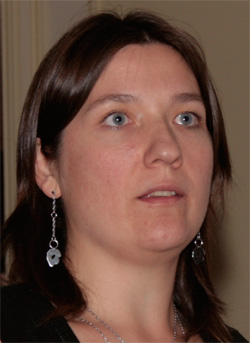
Dr. Bérangère Toury
Laboratoire des Multimatériaux et Interfaces, Université Lyon, Villeurbanne Cedex, France
Title lecture
Preparation of boron nitride & aluminium nitride coatings by the polymer derived ceramics (PDCs) route
Authors
Hussein Termoss, Bérangère Toury, Arnaud Brioude, Samuel Bernard, S. Benayoun, Philippe Miele
Abstract
BN and AlN both are refractory non oxide ceramics displaying high thermal conductivity and electric insulating behaviour. Besides, both are attractive ceramics due to their high thermal and chemical stabilities. Many applications ensued from these properties.
The fabrication of ceramic coatings can be achieved by various industrial processes including Chemical or Physical Vapour Deposition (CVD/PVD), electro-deposition, and dip- or spray-coating. The coatings prepared by chemical processes from liquid precursors or solutions, namely dip- or spray-coating, are much more attractive from an economic point of view. The fabrication of nitride coatings, like BN or AlN ones requires therefore the synthesis of liquid or soluble molecular/polymeric precursors. The latter are converted after deposition into a Polymer-Derived Ceramics (PDCs) by a suitable chemical and thermal treatment.
In this presentation, original results from the preparation of such coatings are reported. Impacts of the preparation conditions (i.e. solvent, precursor nature and concentration, kind of substrate, deposition method) on the surface morphology have been studied by Scanning Electronic Microscopy (SEM) and Atomic Force Microscopy (AFM). The crystallinity of the resulting films has been investigated by Transmission Electronic Microscopy and (IR, Raman) spectroscopies. Finally, mechanical properties obtained on typical BN coatings are presented.
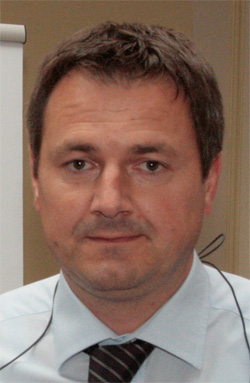
Dr. Martin Vollmer
Bayer MaterialScience AG
Bu Coatings, Adhesives, Specialities, Marketing & Business Development Dispersions
Title lecture
"2K Waterborne Polyurethane Coatings on the rise - from property to function"
Authors
Dr. Martin Vollmer
Abstract
Quality, efficiency and environmental compliance are the predominant drivers in the coatings market. The demand for green technologies speeds up the shift from solventborne to waterborne technologies in numerous applications ranging from wood and furniture coatings, metal and plastic coatings to automotive and large vehicle coatings. In particular demanding applications require high-end solutions and open the door towards waterborne 2-component technologies. The challenge is to translate technical market needs into chemistry. Exactly here polyurethane chemistry provides an excellent toolbox for the development of aqueous polyol dispersions and polyisocyanates to meet high performance requirements in combination with modern and efficient coating processes. Already today waterborne 2-component systems can even be superior to classical solventborne coatings in certain respects, such as chemical resistance or drying time. Key words such as Functional Coatings, Smart Coatings or Nanotechnology are on the horizon as well and it is obvious that waterborne polyurethanes and especially 2- component systems will play a predominant role. Functions like "self-healing", "easyto- clean" or "soft touch" are famous examples. The potential of waterborne polyurethane coatings has not yet been fully tapped. There is unlimited room for innovation. Development partnerships between raw materials suppliers, formulators, end users and academia will meet the challenge.
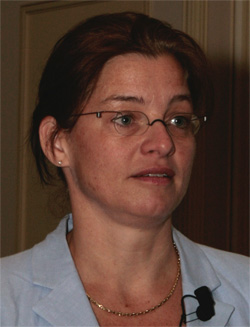
Dr. Mariëlle Wouters
TNO Science and Industry, Eindhoven, The Netherlands
Title lecture
Surface structuring and coating performance
Authors
Mariëlle Wouters, Corné Rentrop, Peter Willemsen
Abstract
Coating formulations are composed of all kinds of ingredients, amongst which (inorganic) fillers are important compounds. Dispersion of these particles is of utmost importance in the performance (the looks and functionality) of the final product and its application. By modification of filler particles the degree of dispersion as well as particle functionality can be tailored.
Recently, we succeeded in modifying anisotropic nanoparticles with two or more different organic groups on the surface and the edges of the nanoparticles thus giving the nanoparticle more than one ’function’. The introduction of a coating compatible component and a coating incompatible component on one single nanoparticle can amongst others result in the creation of a coating with a nanostructured surface. By the use of this ’multiple functionality’ structuring can result in hydrophilic-hydrophobic structured surfaces as well as anti-fouling surfaces. This contribution will present the modification of different particles as well as the effect of the particle modification on coating performance for different applications. The effect of the (nano)structuring of the coatings was evaluated by determining the antifouling and fouling release properties.
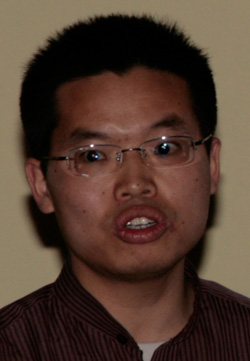
Chen-Wu Wu
Institute of Mechanics, Chinese Academy of Sciences, Beijing, PR China
Title lecture
On a novel method of impact with front-end-coated bullet to evaluate the interface adhesion of the film and substrate
Authors
Zhi-Lin Wu, Chen-Wu Wu, Guang-Nan Chen and Kun Zhang
Abstract
The method of impact with coated bullet was devised to evaluate the adhesion of the film and substrate. In such method, a front-end-coated bullet accelerated by a gas gun was designed to impact the substrate of the tested specimen. The acoustic impedance of the bullet coating is great enough in comparison to that of the bullet body. On impact, a compressive stress pulse of short duration was initiated to propagate toward the film in test. After transmitting through the interface, part of this pulse was reflected on the free surface of the film, and then tensile stress arose around the interface between the film and substrate. Such tensile stresses might induce debonding of the film under test. The generalized description of this method was developed and the effects of the main parameters were investigated with FEM to establish the visualized method.
Biography Chen-Wu Wu
Chen-Wu Wu, Institute of Mechanics (IMECH), Chinese Academy of Sciences, Beijing, China. Research interest: Mechanical behavior of coating/ film.
Selected Publication:
- Chen-Wu Wu, Kun Zhang, Guang-Nan Chen, On the cyclic bending behaviour of a hard coating on a ductile substrate with periodic surface hardened regions, International Journal of Solids and Structures 45 22-23 (2008) 5661-5674.
- Chen-Wu Wu, Guang-Nan Chen, Kun Zhang, Nai-Gang Liang, On the interaction of channeling/segmentation cracks of coating: Study on the critical spacing, Engineering Fracture Mechanics 75 (2008) 2531-2541.
- C.-W. Wu, K. Zhang and G.-N. Chen, Characterising of internal stresses in duplex coating by FEM, Surface Engineering 23 4 (2007) 291-294.
- Chen-Wu Wu, Ban-Quan Yang, Guang-Nan Chen, Kun Zhang, Jing-Hua Xiao, On the tensile behaviors of a hard chromium coating plated on a steel substrate with periodic subsurface inclusions, Surface & Coatings Technology 201 (2007) 7699—7705.
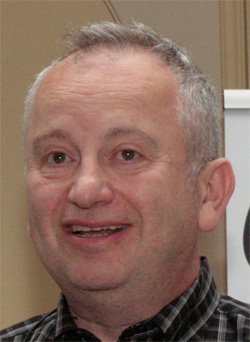
Dr. Alexander Yahkind
Research Manager, AkzoNobel Coatings Inc. USA
Title lecture
Polyols based on isocyanates and melamines and their applications in 1K and 2K coatings
Authors
Dr. Alexander Yahkind
Abstract
Polyurethane Polyols and Melamine Polyols invented by AkzoNobel Coatings offer a valuable alternative to the commonly used Polyester and Acrylic Polyols and a new formulating tool for the development of novel coatings. Based on patented synthetic routes, melamines and isocyanates, typically used in the coatings as a crosslinkers, were converted into polyols suitable to undergo further chemical reactions during film formation. The resin chemistry is based on the selective reactivity of α,β- and α,γ-diols with isocyanates and melamines. The resulting low molecular weight, hydroxy-functional resins are suitable for the use in low VOC solventborne and waterborne coatings. The chemical structures of these resins can be modified based on the desirable properties of the coatings. Aliphatic Polyurethane Polyols were commercialized for applications in car refinish clearcoats and coatings for plastics to improve physical drying characteristics, acid etch and block resistance. Primer compositions based on aromatic Polyurethane Polyols were also developed. Coating compositions based on the Melamine Polyols are currently under the development. They include waterborne, soft-touch interior automotive coatings and solventborne clearcoats with improved scratch and mar resistance.
